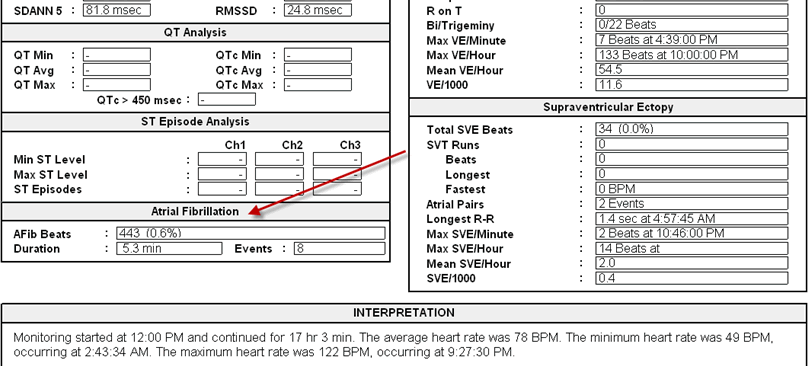The Zymed Algorithm – How it works
Combining precision with power, the Zymed Algorithm simplifies even the most complex holter scans – providing you with an easy-to-use, fast, and accurate beat detection solution in arrhythmia analysis.
The Zymed Algorithm uses EASI to derive consistent, highly accurate, full 12-lead ECG information using only five electrodes to detect and document cardiac arrhythmias and ST changes. This means that you can take any beat and display and document as either 3 Channels or as a highly accurate derived 12-lead for saved strips in your Holter Report.
Holter Monitor Scanning Capabilities
Increase productivity by navigating between four various scanning styles. Zymed Holter Monitor Software can scan 4 different ways:
- Page Mode
- Retrospective
- Super Imposition
- Philips unique QuickScan Mode – an exclusive feature, combining the automation of retrospective scanning and the interactive capabilities of prospective scanning.
Atrial Fibrillation Burden is available as a standard Zymed Holter Report Feature. Number of Events, Duration, and Total Beats as % helps you determine drug regimen or to check patients post-ablation. Click the image below to see a detailed example.

Unmatched Accuracy with The Zymed Algorithm
The Zymed EASI derived 12-lead is unparalleled in its accuracy. We have Electrophysiologists that take the documented strips from their Holter Report into the EP Lab to help them with their procedures. EASI-Derived 12-Lead can help them determine if the procedure is going to take two hours or 4 hours. The Zymed Algorithm delivers accurate beat classification by:
Ensure Artifact-Free Analysis – Turn channels on and off dynamically with each beat based on artifact content.
Prevent Miscounting Artifacts as Normal or Ventricular – After initial classification, beat information is further processed to screen for artifacts.
Categorize on a Beat-by-Beat Basis – Each beat is categorized by matching it against a dynamic, ECG-specific library of rhythm and shape templates.
Customize and Apply Rules for Beats – If a beat does not match an existing template, the algorithm will extract certain features (rhythm, rate, width, area, etc.) and apply rules to automatically differentiate between normal and ventricular beats based on weighted features score.
For more information about the Philips Holter Monitoring System, click here for the brochure.


